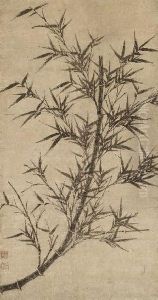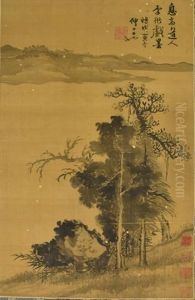Li Kan Paintings
Li Kan was a prominent Chinese painter during the Yuan Dynasty, which was a period that witnessed significant developments in the arts amidst the ruling Mongol Empire. Li Kan was born into a scholarly family in Jiqiu, which is present-day Beijing. He was renowned for his skillful painting of bamboo, which he often depicted using ink on paper or silk.
Li Kan’s technique in painting bamboo was highly regarded for its realism and the way he captured the essence of the plant with fine brushwork and a deep understanding of its structure. His style was characterized by a great economy of strokes, capturing the spirit of bamboo with both strength and delicacy. He developed a method of painting known as the 'dry brush' technique, which became influential and was emulated by later artists.
Apart from his artistic pursuits, Li Kan was also noted for his scholarly interests and was well-versed in poetry and calligraphy. His works were collected by his contemporaries and have been appreciated by generations of artists and collectors. Li Kan's paintings are now considered treasures of Chinese art, and his contributions to the literati painting tradition have had a lasting impact on the aesthetics of East Asian art.
Li Kan's life spanned a fascinating period in Chinese history when the cultural landscape was being reshaped. Despite the political upheaval of the time, he managed to establish a legacy that would influence the development of Chinese painting. His works are held in various museum collections and continue to be studied and revered for their elegance and historical significance.
Li Kan passed away in 1320, leaving behind a body of work that captures the essence of Yuan Dynasty painting. His legacy lies in the inspiration he provided to countless artists who sought to express the natural world through the medium of ink and brush, and in the enduring beauty of his bamboo paintings that continue to be celebrated today.



